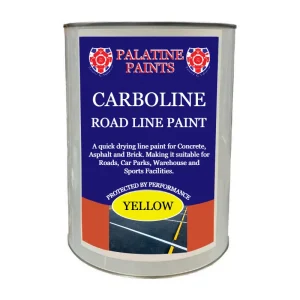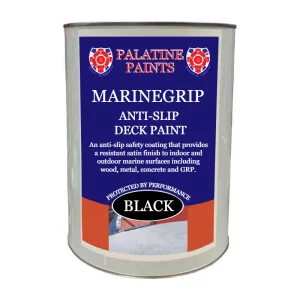Priming and Protecting
Transform Your Concrete Flooring: The Impact and Benefits of Acid Etching
Welcome to the intriguing world of acid etching! This is a technique that has been in existence for centuries, used by artisans, builders, and homeowners to transform ordinary concrete surfaces into extraordinary masterpieces. Acid etching is not just an aesthetic practice; it has practical benefits that we will explore in this article. It’s about time we gave the humble concrete floor the spotlight it deserves!
As a homeowner or property manager, you are always looking for ways to enhance the beauty and value of your property. One area that often goes unnoticed is the concrete flooring. However, with acid etching, you can breathe new life into your concrete surfaces, creating a stunning visual effect while also improving its functionality.
In the following sections, we will dive deep into the world of acid etching. We’ll discuss what it is, how it works, why you should consider it for your concrete flooring, and the many benefits it offers.
What is Acid Etching?
Acid etching, in the simplest terms, is a process that involves applying acid to a concrete surface to create a desired pattern or texture. The acid reacts with the concrete, causing the surface to ‘etch’ or erode, revealing an interesting pattern that gives the floor an attractive and unique finish.
It’s essential to note that acid etching is not a DIY project for the uninitiated. It requires a thorough understanding of the process, the right equipment, and meticulous attention to safety. The acid used in the process can be dangerous if not handled properly. However, when done correctly, the results can be stunningly beautiful.
Acid etching is versatile and can be used on various concrete surfaces, including garage floors, driveways, patios, and even interior floors. With a bit of creativity, you can transform your dull concrete surfaces into works of art.
The Process of Acid Etching
Acid etching might seem complex at first, but it’s quite straightforward once you understand the process. Here’s a simplified overview of the steps involved:
- Cleaning the Concrete Surface: The first step is to thoroughly clean the concrete surface. Any dirt, grease, or oil can interfere with the acid etching process, so it’s crucial to ensure the floor is spotlessly clean.
- Applying the Acid: Once the surface is clean, the acid solution is evenly applied. This is usually done with a sprayer for even distribution. The acid then reacts with the concrete, causing it to etch.
- Neutralising the Acid: After the acid has done its work, it’s time to neutralise it. This is usually done using a neutralising solution or a mixture of baking soda and water. This step is essential to stop the etching process and prevent the acid from causing further damage.
- Rinsing and Drying: The final step is to rinse the surface thoroughly to remove any remaining acid or neutralising solution. The floor is then allowed to dry before any sealant or coating is applied.
Why Choose Acid Etch for Concrete Flooring?
Now that we understand what acid etching is and how it works, let’s delve into why you should consider it for your concrete flooring. The primary reason is aesthetics. Acid etched concrete has a unique and eye-catching appearance that can transform the look of any space. It gives the floor an attractive, customised finish that is sure to impress.
Beyond the aesthetics, acid etching also improves the functionality of concrete flooring. The process creates a rough texture on the surface, which improves traction and reduces the risk of slips and falls. This is particularly beneficial in areas where the floor may get wet, such as in garages or outdoor patios.
Another reason to consider acid etching is that it prepares the concrete surface for further treatments, such as the application of epoxy coatings. The etching process opens up the pores of the concrete, allowing the coating to bond more effectively. This results in a more durable and long-lasting finish.
Benefits of Acid Etching on Concrete Floors
Acid etching offers numerous benefits for concrete floors. It enhances the beauty of the concrete, giving it a unique and customised finish. The resulting patterns and textures can mimic the look of more expensive flooring materials, such as marble or granite, at a fraction of the cost.
In addition to the aesthetic benefits, acid etching also enhances the durability of the concrete. The process creates a rough texture on the surface, which helps to protect the floor from wear and tear. This makes acid etched concrete an excellent choice for high-traffic areas.
Furthermore, acid etching improves the functionality of concrete floors. The rough texture created by the etching process improves traction and reduces the risk of slips and falls. This is particularly beneficial in wet areas, such as garages or outdoor patios.
Understanding Muriatic Acid Concrete
In the world of acid etching, muriatic acid plays a vital role. It’s one of the most commonly used acids for etching concrete, thanks to its effectiveness and affordability. Muriatic acid, also known as hydrochloric acid, reacts strongly with the concrete, creating deep and distinct etchings.
However, muriatic acid is a potent substance and requires careful handling. It can cause severe burns if it comes into contact with the skin or eyes, and it can damage other materials, such as metal or glass. Therefore, proper safety measures must be taken when using muriatic acid for acid etching.
Using Muriatic Acid for Acid Etching
Using muriatic acid for acid etching is a relatively straightforward process. However, it requires careful preparation and safety precautions. Here’s a brief overview of the process:
- Safety First: Before you begin, make sure you have the proper safety equipment. This should include rubber gloves, protective eye-wear, and a respirator.
- Prepare the Acid Solution: Muriatic acid is usually diluted with water before use. The typical ratio is one part acid to four parts water. Always add the acid to the water, not the other way around, to prevent a dangerous reaction.
- Apply the Acid Solution: The acid solution is applied evenly over the concrete surface. This is usually done using a sprayer for even distribution.
- Neutralise and Rinse: After the acid has done its work, it’s time to neutralise it. This is usually done using a neutralising solution or a mixture of baking soda and water. The floor is then thoroughly rinsed and allowed to dry.
Etching Garage Floor for Epoxy: A Detailed Guide
One of the most popular applications of acid etching is preparing a garage floor for an epoxy coating. The etching process opens up the pores of the concrete, allowing the epoxy to bond more effectively. This results in a more durable and long-lasting finish.
Here’s a step-by-step guide on how to etch your garage floor for an epoxy coating:
- Clean the Floor: Start by thoroughly cleaning the garage floor. Remove any dirt, grease, or oil, as these can interfere with the etching process.
- Prepare the Acid Solution: Mix the muriatic acid with water in a plastic container. Remember to always add the acid to the water, not the other way around.
- Apply the Acid Solution: Using a sprayer, apply the acid solution evenly over the garage floor. Allow the acid to work for several minutes.
- Neutralise and Rinse: After the acid has done its work, neutralise it with a baking soda and water solution. Rinse the floor thoroughly with water and allow it to dry.
- Apply the Epoxy Coating: Once the floor is dry, you can apply the epoxy coating. This should be done according to the manufacturer’s instructions.
Safety Measures When Conducting Acid Etching
Safety is paramount when conducting an acid etching project. The acids used in the process can be dangerous if not handled correctly. Here are some important safety measures to keep in mind:
- Wear Protective Gear: Always wear protective gear, including rubber gloves, protective eyewear, and a respirator. This will protect you from any accidental splashes of the acid.
- Work in a Well-Ventilated Area: Acid fumes can be harmful if inhaled. Always work in a well-ventilated area to ensure the fumes can dissipate.
- Store Acids Safely: Acids should be stored out of reach of children and pets. The containers should be clearly labelled and kept in a cool, dry place.
- Dispose of Waste Properly: Any leftover acid solution and rinsing water should be disposed of properly. Check with your local waste disposal facility for guidance.
Conclusion: Transform Your Concrete Floors with Acid Etching
In conclusion, acid etching is a versatile and effective technique for transforming your concrete floors. It offers aesthetic benefits, improved functionality, and enhanced durability. Whether you’re updating your garage floor, enhancing your patio, or adding a touch of sophistication to your interior floors, acid etching is a method worth considering.
Remember, safety is paramount when working with acids, so ensure you have the correct protective equipment and follow all safety guidelines. With the right approach and safety measures in place, you can transform your concrete floors into stunning works of art. Don’t let your concrete floors remain dull and ordinary; give them the transformation they deserve with acid etching.
A solution designed to prepare concrete floors for painting.
- Removes surface laitance
- Neutralises excess alkaline content in new concrete
- Creates a key on very smooth floors
- A diluted Hydrochloric acid solution
Please allow 1-2 working days for next day delivery of 25L items. This is due to the operation times of the hazardous goods vehicles of the external couriers.
Contacting us is easy!
Email: [email protected]
Call Us: 01942 884 122
Contact form: https://www.palatinepaints.co.uk/contact-us
Live Chat Service: Press the small blue icon at the bottom left of your screen.

